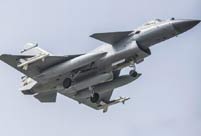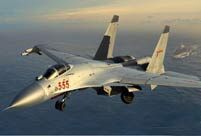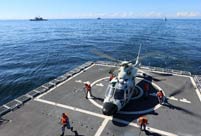

KUALA LUMPUR, Nov. 22 -- The ASEAN-China Free Trade Area (ACFTA) is a free trade area between the 10 Association of Southeast Asian Nations member states and China.
The initial framework agreement, signed on Nov. 4, 2002 in Phnom Penh, Cambodia, was designed to establish a free trade area among the 11 nations by 2010. The free trade area came into effect on Jan. 1, 2010.
The ACFTA is the largest free trade area in the world in terms of population and third largest in terms of nominal GDP, trailing the European Economic Area and North American Free Trade Area.
Under the free trade agreement, tariffs will be reduced to zero on 7,881 product categories, or 90 percent of imported goods. This reduction already took effect in China and the six original members of ASEAN: Brunei, Indonesia, Malaysia, the Philippines, Singapore and Thailand. The remaining four countries will follow suit in 2015.
The average tariff rate on Chinese goods sold in ASEAN countries decreased from 12.8 percent to 0.6 percent starting Jan. 1, 2010. Meanwhile, the average tariff rate on ASEAN goods sold in China decreased from 9.8 percent to 0.1 percent.
Chinese Premier Li Keqiang in 2013 called for an "upgraded version" of the ACFTA, pledging economic and trade cooperation of "a greater scope and higher quality."
The decision by leaders of China and ASEAN member states to negotiate for an upgraded version of the FTA is made to meet the demand for restructuring and upgrading their respective economies and is also a new move to further enhance the China-ASEAN strategic cooperative relationship.
The ACFTA has played a leading role in the overall economic integration in East Asia and also made great contribution to the liberalization of global trade.
Progress has been made in comprehensive and in-depth consultation on goods and services trade, investment and economic and technological cooperation since the first round began in Hanoi, Vietnam in September 2013.
China-ASEAN economic cooperation has never been more dynamic and fruitful, as China has become ASEAN's largest trading partner and ASEAN has emerged as China's third biggest trading partner with bilateral trade growing by more than 20 percent annually on average and surging by 37 times over the past two decades.
At the 18th ASEAN-China, Japan and South Korea (10+3) leaders' meeting here, Premier Li said China's talks with ASEAN on the upgrading of ACFTA will end soon.
The two sides are targeting their bilateral trade at 500 billion U.S. dollars by 2015 and 1 trillion dollars by 2020.
 J-10B fighters with homegrown engine in test fligh
J-10B fighters with homegrown engine in test fligh Photos of U.S. Navy intruding in South China Sea released
Photos of U.S. Navy intruding in South China Sea released Cats who immediately regretted their life choices in photographs
Cats who immediately regretted their life choices in photographs Beautiful girl from police college becomes Internet hit
Beautiful girl from police college becomes Internet hit 10 tons of copper coins unearthed in 2,000-yr old tomb
10 tons of copper coins unearthed in 2,000-yr old tomb In Pics: Amazing Chinese fighters
In Pics: Amazing Chinese fighters
 Chinese, U.S. navies hold first-ever joint exercise in the Atlantic
Chinese, U.S. navies hold first-ever joint exercise in the Atlantic When a Chinese woman marries an Indian man
When a Chinese woman marries an Indian man Photos of beautiful teacher hit the Internet
Photos of beautiful teacher hit the Internet Top 20 hottest women in the world in 2014
Top 20 hottest women in the world in 2014 Top 10 hardest languages to learn
Top 10 hardest languages to learn 10 Chinese female stars with most beautiful faces
10 Chinese female stars with most beautiful faces China’s Top 10 Unique Bridges, Highways and Roads
China’s Top 10 Unique Bridges, Highways and Roads A traditional solution
A traditional solution Unwanted for marriage
Unwanted for marriage Joint efforts needed to shield citizens abroad
Joint efforts needed to shield citizens abroad Chinese employers up the ante for foreign hires
Chinese employers up the ante for foreign hiresDay|Week